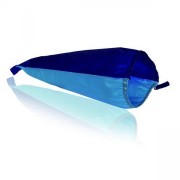5 Signs that you need Orthopaedic Shoes
Anyone can benefit from Orthopedic Shoes which are designed to help alleviate and prevent foot, ankle, and knee pain. And while not everyone requires orthotics we recommend anyone experiencing foot pain schedule a consultation with a certified pedorthist. If you wait until your foot pain is so bad that you can hardly walk your road to recovery will be much more difficult.
By speaking with a pedorthist and educating yourself on proper foot health you will be able to identify the warning signs of serious foot conditions and take preventative measures.
We provide Stock Orthopaedic shoes from known labs with the following specifications which is defined by the Pedorthic Association of Canada:
-
Removable sock liner / insert to accommodate prescribed orthotic devices
-
Additional depth in the upper, sock-liner or additional insole inlay
-
Adjustable closure (laces, Velcro) to secure hind-foot position inside the shoe
-
A smooth, protective inner lining
-
Broad outsole, last patterns
-
Upper width that entirely accommodates the anatomy of the foot
-
Appropriate stability through the outer sole.
-
A heel counter that is appropriate based on medical need, which may include a soft heel counter, strap or open heel to accommodate heel pathologies
-
An outer sole that is equal to, or exceeds the width of the upper
-
An outer sole with sufficient toe spring roll to promote normal gait cycle
-
A shoe that is conducive to permanent modifications
These are the top 5 signs you may need Orthotics
Worn out shoes – Take a look at your shoes – are you wearing the soles on one side more than the other? You may pronate (foot rolls inward) or supinate (ankles turn out). Is the left shoe more worn down than the other? You may have a leg length discrepancy. You can learn a lot from your old shoes, and so can we. When a new client comes in to see our Certified pedorthist we ask that you bring in 2 pairs of well-worn shoes for us to examine.
The Wet Test – With Wet Feet, stand on a piece of newspaper or paper towel and then examine your foot print. A footprint without a c-curve in the arch could signify a pronator, and a prominent c-curve could suggest a supinator.
Foot Pain – You would think this one would be obvious but you would be surprised by how many people allow themselves to suffer unnecessarily with foot pain. Repeated exposure to improperly fitted footwear can cause permanent damage to your feet. High heels, pointed toes shoes, and any shoe that doesn’t properly conform to the shape of your foot can cause undo stress and fatigue. If you are experiencing pain – talk to someone who can help!
Heel Pain – Severe pain in the heel is not normal. If you are experiencing pain, particularly in the morning it could be the sign of a foot condition like Plantar fasciitis. Plantar fasciitis can be treated with orthotics, metatarsal pads, stretching and lifestyle changes.
Injury to Lower Limbs – If you have recently suffered an injury to your lower extremities it is important to make sure you are properly support your recovery from the ground up. A misaligned gait can cause issues with you ankles, knees, and hips.


